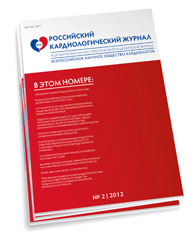Cardiologists: Know the signs of Lyme disease
Spring has arrived, and along with warmer weather and blossoming tree buds, a seasonal risk looms, especially for outdoor enthusiasts. The risk for Lyme disease, and the cardiac complications that can be associated with it, increases as people spend more time outdoors.
Lyme disease is an infection caused by a species in the spirochete pathogen Borrelia burgdorferi sensu lato group and is spread through tick bites.
“Lyme disease is often overlooked by physicians, but it’s important to recognize and treat because of the cardiac complications that can occur if left untreated. Every cardiologist should be able to recognize signs and symptoms,” Nieca Goldberg, MD, cardiologist in the department of medicine, Leon H. Charney division of cardiology, and director of the Joan H. Tisch Center for Women’s Health at NYU Langone Medical Center, told Cardiology Today.
“Often, the first sign is a rash at the site, known as a bull’s-eye rash with a red ring and red center,” Goldberg said.
According to the CDC, the rash is usually not painful or itchy, so it may be overlooked.
In the early localized stage, symptoms can include a rash, fatigue, chills, fever, headache, swollen lymph nodes and joint aches, similar to symptoms for many other diseases, including influenza or a common cold.
Goldberg said cardiac complications occur in 8% of people in the second stage of the disease, known as the early disseminated stage, which can manifest in days or weeks post-infection. “The Lyme infection causes inflammation of the heart muscle and conduction system. This can result in heart failure due to myopericarditis. It can cause heart block, bradycardia, and the patient may have symptoms of feeling faint or fainting,” she said, adding that simple fatigue may be overlooked as an indicator.
In a case report published in 2012 in The Medicine Forum, researchers reported that complications include atrioventricular block, myocarditis, mild left ventricular dysfunction and rare instances of cardiomegaly or fatal pericarditis, but that most symptoms dissipate after treatment with a long-term course of antibiotics. However, they reported that 98% of adults who develop Lyme carditis will develop first degree atrioventricular block, and 58% of those patients are likely to develop complete heart block. The symptoms generally appear during the early disseminated stage, after several weeks through several months.
Goldberg said she might suspect Lyme disease in unexplained bradycardia or symptoms of fatigue, particularly if the patient has a history of travel to or living in an area where Lyme disease is prevalent.
According to the CDC, 95% of all cases of Lyme disease occur in 13 states: Connecticut, Delaware, Maine, Maryland, Massachusetts, Minnesota, New Hampshire, New Jersey, New York, Pennsylvania, Vermont, Virginia and Wisconsin.
The Infectious Diseases Society of America recommends treatment with doxycycline, amoxicillin, cefuroxime axetil or other antibiotics, depending up stage of the disease, contraindications and other factors.
Disclosure: Goldberg reports no relevant financial disclosures.
Source: www.healio.com






